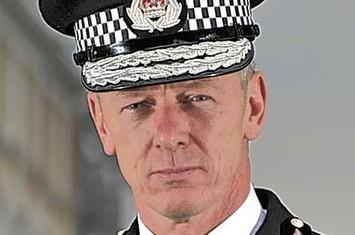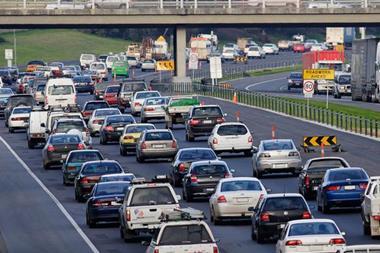The cost to the insurance industry of accidents caused by uninsured drivers is around £400m a year, and the human cost is incalculable. With the proportion of uninsured vehicles reaching 13% in some regions in the UK, the pressure is on to get tough on uninsured drivers – and save lives
Let’s face it: the motor market’s a mess. Actuaries predict the combined operating ratio will hit an eye-watering 120% this year; everyone knows reserves are running dry; and with HSBC in run-off and Provident raising the ‘for sale’ sign, the first casualties are clear.
All the more galling, then, that motor insurers are forking out some £400m a year to cover the cost of uninsured drivers; those who are not fulfilling their legal obligation to purchase motor insurance. And lest we forget, there’s a huge human cost as well, with uninsured drivers responsible for a disproportionate number of accidents and, tragically, fatalities.
Which begs the question: why isn’t the government doing more to stop people breaking the law? And how can the industry help bring about a solution?
Counting the costs
Every road fatality costs the public purse around £1.6m once lost economic output, medical and ambulance costs are taken into account, the Department for Transport (DfT) has estimated. On the same basis, each serious accident costs £140,000.
The Motor Insurers’ Bureau (MIB) was set up in 1946 to compensate the victims of negligent uninsured motorists. Every motor insurer is obliged to contribute to its funding. This year, motor insurers will collectively fork out £397m to the MIB. That figure has rocketed from around £25m in the early 1990s, according to the bureau’s head of motor industry database services, Neil Drane.
The good news is that the figures, following a long upward spiral during the ’90s and noughties, are at last heading in the right direction. The overall level of uninsured driving has dropped from a peak of 5% in 2004, enabling the MIB to cut its levy from £410m in 2008. Even more welcome was the £40m that the MIB was able to hand back to its members last year.
But the UK’s current figure of 4%, equating to approximately 900,000 uninsured drivers, is still high compared to that of countries like Germany and Spain, where it is under 1%.
And in some parts of the UK, the figure is much higher. In Greater London, 13% of cars are uninsured, and on Merseyside, the figure is 12%.
Swinton insurer development director Chris Collings says: “There are more and more hit-and-run accidents and these areas become high-risk. Anybody operating there is going to find that the rates are getting harder and harder to cap.”
The police have been given tough enforcement powers to seize uninsured vehicles, which they now deploy more than 500 times a day, according to MIB statistics. But despite big discrepancies across the country in the level of uninsured driving, Drane is unwilling to criticise the performance of individual forces.
He says: “As far as we are concerned, there are discrepancies between forces but some have a bigger problem than others.”
Aviva’s UK insurance motor underwriting manager, Nigel Bartram, points out: “There are some postcodes where up to 50% of vehicles are uninsured; it should be like shooting fish in a barrel.” But he acknowledges that police forces operating in big conurbations often have to have to tread carefully due to the potential for heavy-handed tactics to spark unrest.
Some have called for stronger penalties for driving without insurance. The road safety campaign Brake has called for it to become an automatically imprisonable offence. North Yorkshire deputy chief constable Adam Briggs, a roads spokesman for the Association of Chief Police Officers, is sceptical about the feasibility of this idea. “We already have one of the highest prison populations in Europe. I don’t think that would work.”
He is more interested in plugging loopholes, like when the owners of uninsured vehicles reclaim their vehicles by claiming it is covered by a ‘dealer’s’, in other words another person’s, policy.
Meanwhile, Zurich’s head of personal lines, broker division, Mark Coffey, says he would like fines for driving without insurance to be raised in line with the cost of policies.
The human aspect
Swinton’s Collings recently had a first-hand taste of the problems caused by uninsured driving. His car was struck by an uncovered vehicle, resulting in injuries to his head, neck and arms. “The police weren’t interested,” he says.
As a result of this accident, Collings became one of the 23,000 people injured in accidents that the MIB estimates are caused by uninsured and untraceable vehicles in an average year. That figure includes 160 fatalities, like nine-year-old Robert Gaunt, killed a year ago this week near Wrexham (see box, left).
In 2008, the latest year for which figures are available, there were a total of 2,538 deaths resulting from RTAs. The MIB’s estimate of 160 fatal accidents involving the 4% of uninsured drivers translates to just over 6% of total fatalities. In other words, uninsured drivers are, based on these figures, half again more likely than the average motorist to be involved in a fatal road traffic accident.
If the level of accidents caused by uninsured drivers was the same as that for the rest of the motoring population, there could be 50 fewer deaths per annum on the roads; slightly less than the reduction that the government is hoping to achieve by cutting the safe drink-driving limit to a single pint.
The discrepancy is even greater when the figures for injuries are examined. According to the MIB, it paid out personal injury claims to over 22,200 individuals last year, which represents nearly one in 10 of the total 228,500 road casualties. “These figures are frightening,” Coffey says.
Recent ABI research showed that uninsured drivers were also far more likely than their insured counterparts to be convicted for offences like drink driving. Fortis underwriting director Adam Clarke points out: “The person who drives uninsured is more often the kind of person who is more likely to take risks on the road.”
Cracking down
The insurance industry’s hopes for bringing down the level of uninsured driving are pinned on continuous enforcement insurance (CIE), which the MIB aims to see introduced in the spring of 2011.
This new system will enable frequent comparisons between the tax information on the Driver and Vehicles Licensing Agency (DVLA)’s vehicles register and the MIB’s motor industry database.
If the system works as planned, these checks will identify those vehicles that the database shows as uncovered by an insurance policy.
The registered keeper of any vehicle thus identified will be sent a warning letter. If they fail to get insured, a fine will be slapped on the keeper. If that approach doesn’t work, the vehicle will become liable for more draconian penalties like clamping, removal and disposal. It will enable insurers to more effectively enforce the new offence, created under the 2006 Road Safety Act, of keeping an uninsured vehicle.
Aviva’s Bartram sums up: “The tax and insurance databases will be linked. If there’s not a match, a letter will be issued. At each stage, the data will be checked.”
CIE will enable validation of insurance to be done upfront rather than devoting scarce investigative resources to roadside checks, thus enabling the roads police to target those who are deliberately avoiding insurance.
The MIB’s Drane is optimistic that the combination of tougher enforcement powers, backed by better checking, will have a major impact, reducing the level of uninsured vehicles on the road by as much as 40%.
But the insurance industry faces major challenges getting prepared for CIE. Insurers and brokers will be responsible for keeping the database up to date. Biba technical and corporate affairs executive Graeme Trudgill says: “We have to make sure that there’s a system that really works. Brokers are going to get a lot of calls if the records are not right, so they need to ensure that they are.”
There is huge scope for small but crucial mistakes: one wrong key stroke taken down over the phone could mean that a customer would appear as uninsured. They would be understandably irate if they then received letters threatening them with fines. The reputational downsides are clear for the industry.
World Motor Insurance Consultancy director Jack Brownhill says: “It’s important to get information on the database. If we don’t, [customers] are going to fall into the uninsured pool and then they will come running to their broker. We need to ensure that the database is working virtually 100% effectively within a four-day period.”
A pilot project is due to take place later this year, which should enable the industry to establish the right timescales for sending out letters.
Stuck in traffic
The insurance industry itself has forked out for the costs of the database. But even though the powers to introduce the new system have been on the books since 2006, it cannot be implemented until the DfT has laid a commencement order and regulations in parliament.
The draft regulations were consulted on in the early part of last year, but since then there has been little progress. “Regrettably, CIE is a couple of years behind schedule,” Drane says.
In addition, funding approval for an awareness raising campaign (see box) is awaiting clearance by the DfT and DVLA boards.
Drane believes that CIE commands broad cross-party support. And Biba has held meetings with Conservative shadow transport ministers Theresa Villiers and Robert Goodwill to ensure they are up to speed on the issue.
Nevertheless, time is running out for the crucial order to be laid before the general election is called, triggering a decision-making hiatus across Whitehall.
Drane says: “We would like to see the commencement order laid before parliament so that we can begin the whole awareness side with the general public.”
But even before this order is laid, insurers are beginning to turn their attention to completing the final piece of the CIE jigsaw: matching driving licences and insurance documents. Fortis’s Clarke says: “It would enable us to start tackling the issue from the other side, because there are people who are licensed but not insured.”
Going this extra step, however, throws up sensitive issues around data confidentiality because it involves sharing personal information. Bartram, who has been discussing the issue with the DVLA as a member of the ABI’s motor committee, says the key issue is getting licence holders to give consent to releasing the information. “Insurers would prefer to have reasonable access to the data because they are offering unlimited liability,” he says.
A spokeswoman for the MIB says it is crucial to keep up the momentum. “We are extremely happy to see a reduction in the level of uninsured driving but don’t want to be complacent. We’ve still got one of the worst performances in western Europe. There’s still a lot to be done.” IT
Fatal consequences
“He was a typical nine-year-old boy who lived for the day and loved his bike,” says Tara Green, the stepmother of Robert Gaunt, who died a year ago this week after being struck by an uninsured vehicle.
Around 7pm on 21 March 2009, Robert – from the village of Overton, near Ellesmere – was on his way back from playing with friends.
He had emerged from a public footpath and was either cycling or pushing his bike on the A539 on the outskirts of Overton, when he was hit by a vehicle driven by an uninsured and unlicensed driver.
“He left the scene of the accident. Robert was left for dead,” Green says.
When his body was discovered, Robert was taken to Alder Hey Children’s Hospital with head injuries and multiple fractures. But he died two days later.
The driver was caught and received a 22-month jail sentence, but is set to be released after ten-and-a-half, when he will return to the area.
“He should have received at least four or five years. If they are not insured, they should have longer sentences, especially in these circumstances,” says Green, who has launched an online petition on the No 10 Downing Street website to campaign for stiffer sentences for uninsured drivers.
“It’s too late for Robert,” she says, “but we are trying to get the law changed.”
Getting the message across
An MIB spokesman acknowledges that raising awareness of the need for driving insurance is tough, especially among 17- to 20-year-old males, who make up the biggest chunk of uninsured drivers.
“Unless you tattoo a top model with the message of uninsured driving on her, you will struggle to get the message across to them,” he says. To access this hard-to-reach age group, the MIB has been talking to lads’ mags like FHM, as well as developing a partnership with the Top Gear website.
He says: “Customers need to recognise that [the MIB’s database] is going to work in the same way as the TV licence; there will be nowhere to hide.”
Aviva’s UK insurance motor underwriting manager, Nigel Bartram, believes that efforts to raise awareness of the need for insurance need to happen earlier. He suggests that broader knowledge about financial services should be included in the school curriculum, perhaps as part of a life skills module.
Hosted by comedian and actor Tom Allen, 34 Gold, 23 Silver and 22 Bronze awards were handed out across an amazing 34 categories recognising brilliance and innovation right across the breadth of UK general insurance.













































No comments yet